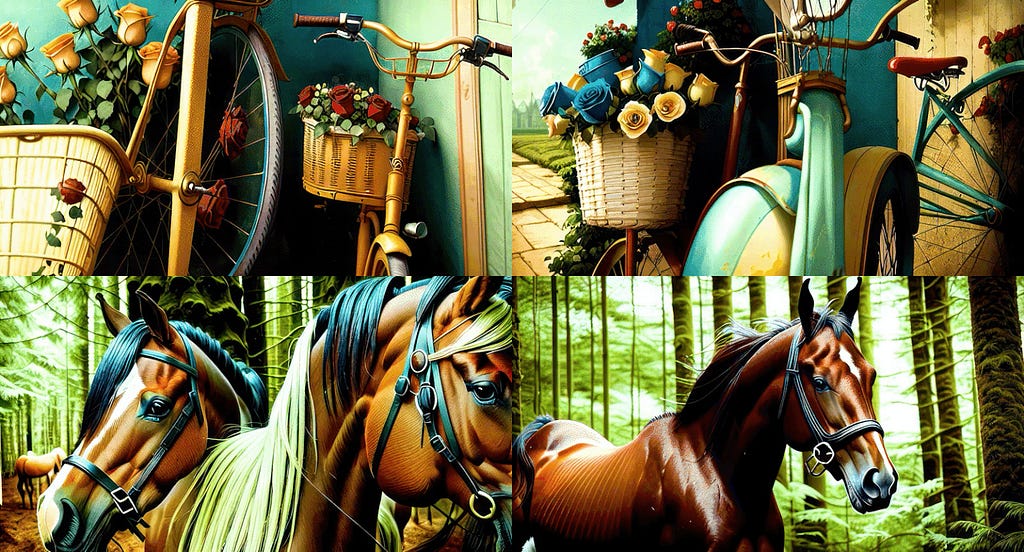One novelist’s experiment in pushing the limits of AI today

“AI today is like a horse, not a bike .”
That’s how PJ Caldas, a best-selling Brazilian author and an Emmy-winning advertising creative director, describes the state of generative AI today. He has published multiple books in Portuguese and has just released his first English novel “The Girl from Wudang.” He has been actively experimenting with generative AI tools such as Midjourney and ChatGPT this past year and I sat down with him recently to ask how that was going. Here are a few insights into the possibilities and limits of AI as it stands today when utilizing it for creative endeavors such as writing and publishing a novel.
1. AI today is like a horse, not a motorcycle.
That is an apt metaphor that could only come from a novelist. What he means here refers to the predictability of the output from these AI tools.
Rolling on the throttle of a motorcycle while releasing the clutch lever might take a little practice but once you know how, it’s predictable. On the other hand, riding a horse is a trickier act. Every horse behaves differently because it is a living thing with its own temperament. It’s a dance between the rider and the horse.
AI is a machine, and so is a motorcycle. However, the irony is that generative AI today is less like a machine and more like a living thing. Even if you give the same prompt to ChatGPT or Midjourney, what you get back differs each time slightly just as the reaction from the horse you ride is different every time and you need to be sensitive to it.

2. Machines are better at generating ideas. Humans are better at judging ideas.
For his book, PJ researched AI for close to a decade, way before the AI craze we are seeing as of late. More recently, he says that he tried using AI tools to help him write but as a novelist, he found the output unsatisfactory. Those tools can write decent sentences or even paragraphs in isolation. When it came to creating a narrative that is deep and interesting enough for a book, it fell short. Far short.
In one instance, he remembers using ChatGPT to help him write a short story. He kept asking it to revise the paragraphs it was writing, and all of a sudden, ChatGPT stopped mid-sentence and couldn’t refine further. It seemed as if it just gave up and walked away from the desk.

He then decided to shift his focus from using AI to write the story to leveraging it for the promotion for his book. He used Midjourney to develop how his characters would look, iterations of the cover of the book, and storyboards. PJ also hired an animator who was experimenting with AI to turn the storyboard into an animated trailer for the book. PJ’s new book is about AI and martial arts so it was apt for him to use generative AI to promote it.
Through the process, it’s become clear that machines are good at generating ideas but it’s not good at judging ideas.
For now, that is. Time will tell how long that will last.
3. Writers, don’t be lazy.
When I asked PJ what advice he’d have for a 25-year-old writer, he immediately said “Don’t be lazy.”
Generative AI tools work based on past data and by looking for patterns. As Insight #2 says, they are good at generating but if you are a creative director with experience, taste, and high standard, you would know what they generate are often very average. The craftsmanship of the work a generative AI tool creates is actually not bad but it’s a lot of similar stuff. “Don’t just use it to write for you. You have to write yourself over and over to be able to judge what is good and what isn’t.”
Another crucial element of storytelling is the fundamental difference between an anecdote and a story. Malcolm Gladwell said that “An anecdote is a narrative that confirms the audience’s expectations. A story is a narrative that betrays the audience’s expectations.”
In a way, today’s generative AI does do this, but by accident. Good writers do this on purpose and with intent. And to do that, you have to understand good storytelling, and that requires practice.
The conversation with PJ Caldas is now available in the Japanese version of my podcast “The Creative Mindset.”
Side note: this episode was created by partially using AI 🙂
- Apple Podcast:#025 「小説家が挑むAIの可能性と限界」作家PJ Caldasさん対談 前編
- Spotify: #025 「小説家が挑むAIの可能性と限界」作家PJ Caldasさん対談 前編
We will be releasing the English version of this episode in a couple of weeks. In the meantime, please listen to the other episodes here:
Looking for cool gifts? Check Rott515 store!
